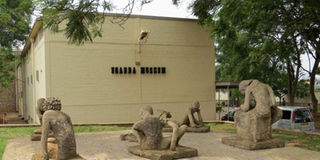We need to make the most of our museums

What you need to know:
The issue: Museum Day.
Our view: We commend the efforts of everyone who collects and archives information, artefacts, photographs and works diligently to ensure that we can see a bit of what we learn in the classroom.
Stories of people visiting the Uganda National Museum and getting shocked to find different collections are many. Public perception seems to be that the museum does not have a lot to offer. Yet the museum boasts of galleries such as music and ethnography, the cultural village, several historical collections, and a resource centre that can be used for research.
Today, to mark the International Museum Day, the President is expected to launch an archive of former president Idi Amin, among other activities. The museum says this is a never-been-seen-before archive so you would expect it to be the first thing you see when you Google the Uganda National Museum. But this is not the case. Instead, there are several old reviews of the museum and a bit of information on it.
It is not enough to have such an institution in place, information about it should be so readily available that anyone curious enough to wonder what it has to offer will find it. Considering that this year’s museum day theme aims to point out that, “Museums are an important means of cultural exchange, enrichment of cultures and development of mutual understanding, cooperation and peace among peoples,” this is a good opportunity for the Tourism ministry to highlight our museum’s potential, to show that Uganda, indeed, has more to offer tourists other than the flora and fauna.
It is also an opportunity to point out where we need to improve to make our museum, and smaller community museums, more appealing.
The beauty of museums in Uganda is that beyond the national one, different communities have collections that people would not mind paying to see. Schools such as Gayaza have archives of the institution’s history. Bank of Uganda has a money museum, which shows all our past currency. Religious organisations have collections of their history, the people who shaped it and the like. There is, therefore, a lot of material to work with if the ministry and all other stakeholders put in the work to ensure that all these resources do not gather dust or get damaged when they can be a source of income.
Paying attention to these would also truly protect our heritage because future generations would be able to trace their history, without having to rely on the knowledge of a few people who have no evidence of what truly happened.
We, therefore, commend the efforts of everyone who collects and archives information, artefacts, photographs and works diligently to ensure that we can see a bit of what we learn in the classroom for ourselves.
The onus is on us to ensure that all this hard work is not in vain. That people will have an opportunity to enjoy it, and that it will be protected for generations to come.




